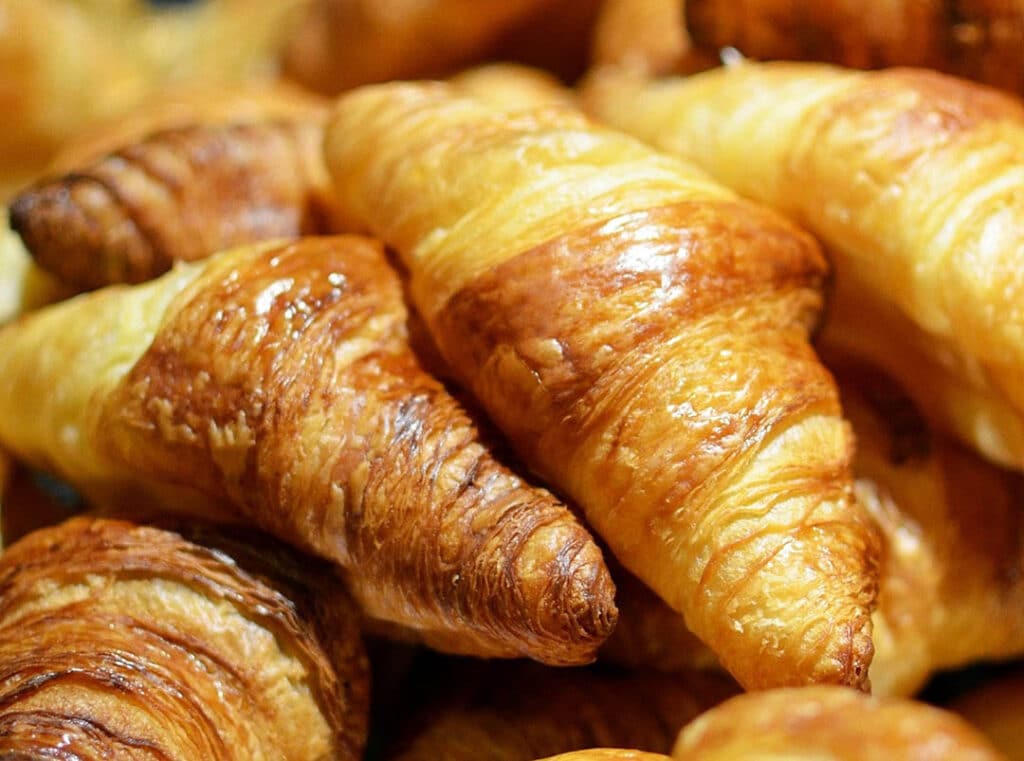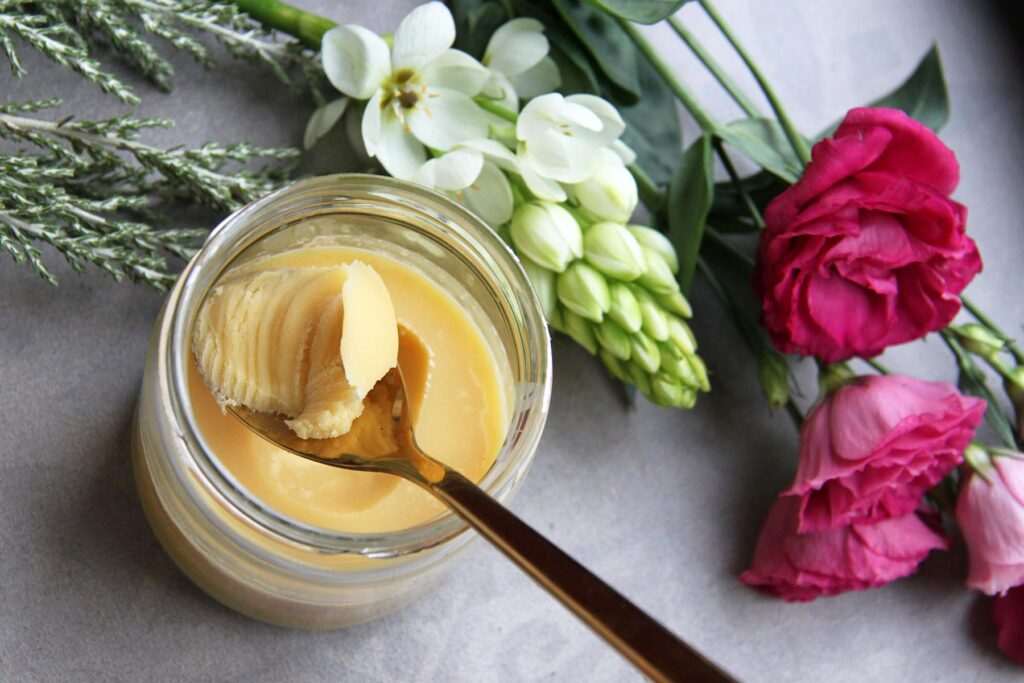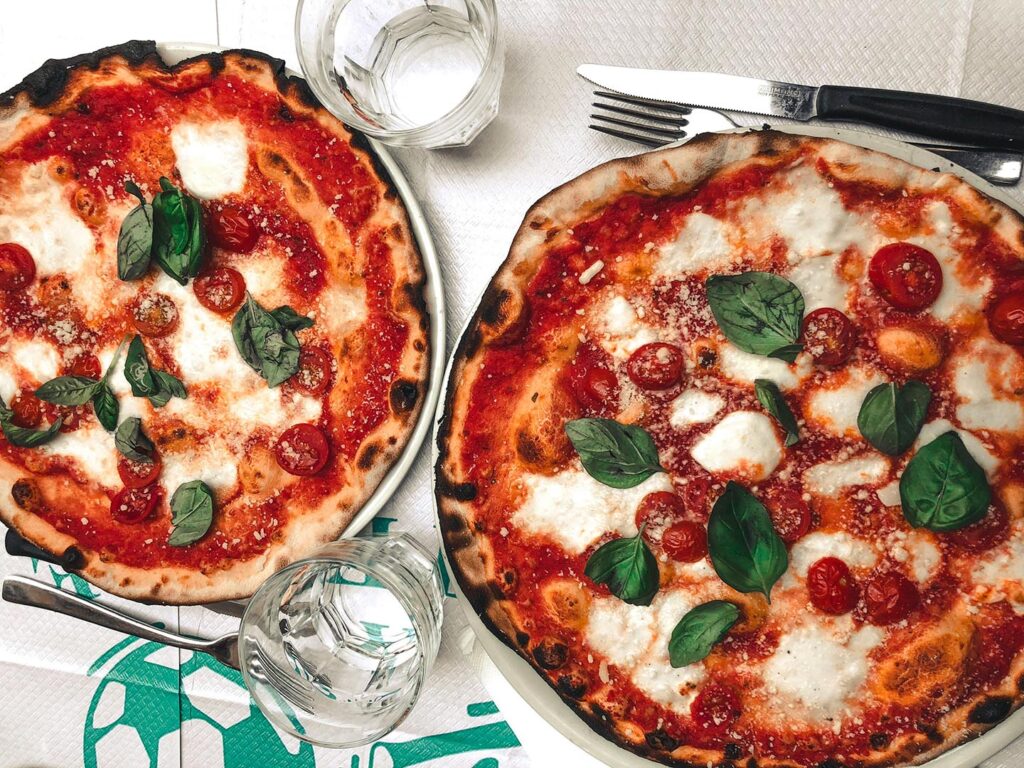
The delicious, flaky, buttery croissant is a true gastronomic symbol of France… but how did that come about? The croissant doesn’t even originate in France! So, where does it come from, and how is France associated with it? Let’s explore this fascinating pastry.
There are two theories about how this tasty treat came into the world. The first theory states that the Turks invented the croissant in the 16th century during the siege of Istanbul. The second states it originated in Vienna, Austria, to celebrate the defeat of the Ottoman army in 1683 at the siege of the Austrian capital. These pastries were similar to traditional Austrian kipferl yet more bread-like, and it is said that the Viennese bakers made them into the shape of a crescent to mimic the shape seen on their enemies’ flag to “take a bite out of them.”
It is reported that Austrian bakers, August Zang and Ernest Schwarzer, opened a Viennese bakery in Paris in 1909 and brought this brioche treat, among other traditional bakes, to France. The bakery was incredibly popular with the French people. This is also where the term “viennoiseries” (meaning Viennese pastries) originated and is still used today to refer to all manner of croissants, brioche, pain au chocolat, turnovers, butter pastries, and more.
So, how did this pastry become “French?”
Towards the end of the 19th century, French bakers started changing the Austrian croissant recipe. They replaced the brioche dough with puff pastry and even added yeast to the puff pastry… and the croissant as we know it was born! They kept the crescent shape, but the dough changes dramatically altered the pastry’s mouthfeel, texture, and flavor. The new pastry was puffier and airier on the inside and more crisp on the outside.
What makes a good croissant?
Creating a delectable croissant is a true work of pastry art. A good croissant should be buttery, tender, and flaky but never overly moist or mushy. The final pastry should have a delicately balanced flakiness-to-chewiness ratio that is incredibly difficult to achieve. Each lamination of the buttery puff pastry dough should be well-defined and differentiated without falling apart or crumbling when bitten into. The bake should be a light golden brown.
What about croissant varieties?
Croissants today come in a wide variety of shapes and sizes; some even come with fillings or toppings. The name now refers more to the dough used than the shape of the pastry. Browsing any French bakery, you may find varieties such as:
- Croissant au beurre, which is made with quite a lot of butter
- Ordinary croissant nature, which is made with margarine instead of butter (which is typically found in other countries or cheaper mass-produced croissants)
- Croissant au chocolat, which is a croissant au beurre filled with chocolate and occasionally drizzled with icing
- Croissant aux amandes, which is an almond croissant
- Croissant aux chocolat et amandes, which is an almond and chocolate croissant
- Croissant jambon-fromage, which is a ham and cheese croissant
- and so many more
A few fun croissant facts:
- January 30th is worldwide croissant day.
- The croissant found its way to the USA in the 1980s thanks to the Sara Lee Company.
- Marie Antoinette loved to start her day with a fresh croissant and was rumored to have brought the delight to France.
- The term “croissant” first appeared in a French dictionary in 1863.
- A good croissant has an aroma of caramelized butter.
- Since the 1920s the croissant has been a French bakery staple.
- The most expensive “croissant” in the world is sold at London’s Dum Dum Donutterie. It is a hybrid doughnut-croissant, called a cronut. A single one of these cronuts costs $2,000 dollars and includes saffron-infused butter dough, Cristal rose champagne caviar, Tahitian gold vanilla beans, gold leaf, and rare Amedei Procelana chocolate (the world’s most expensive chocolate made by Amedei chocolatier in Tuscany).
Want to try to make fresh croissants at home? Take a look at this recipe> https://mizenplace.com/recipe/croissants
What do you think about croissants? Love them? Hate them? Let us know in the comments!




